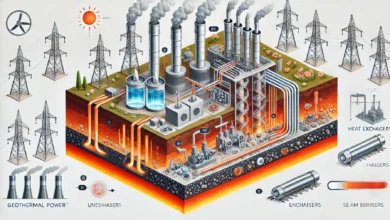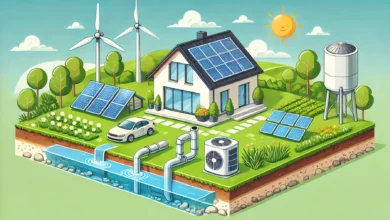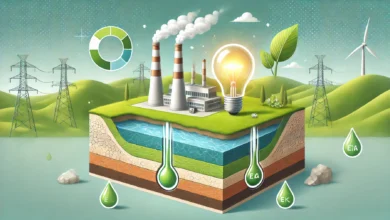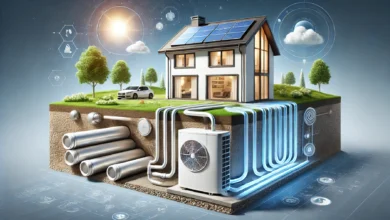How Do Geothermal Power Plants Work?
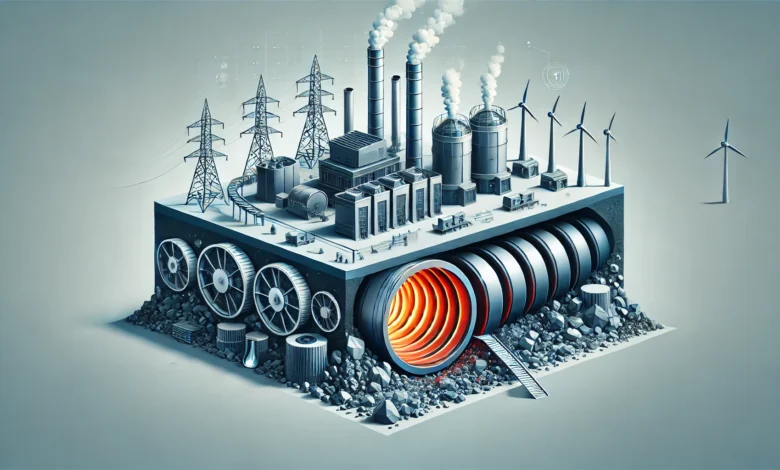
Contents
What Are Geothermal Power Plants?
Geothermal power plants harness heat from the Earth’s interior to produce electricity. By tapping into subterranean heat extraction, these plants utilize underground thermal resources to generate renewable energy sources with a low environmental impact. Their reliability and efficiency make them ideal for providing a continuous power supply.
How Do Geothermal Power Plants Work?
Geothermal plants operate by accessing heat stored beneath the Earth’s surface. This heat, generated by the planet’s internal processes, is used to produce steam, which drives turbines connected to generators. These systems can be classified into three main types based on their technologies:
1. Dry Steam Technology
Dry steam technology is the oldest method, directly using steam from underground reservoirs to turn turbines. It’s highly efficient and was first applied in the Larderello geothermal plant in Italy—a site still operational today.
2. Flash Steam Plants
Flash steam plants extract hot water from underground reservoirs. As it rises, the pressure decreases, causing the water to turn into steam, which drives turbines. This method is widely used due to its balance of efficiency and scalability.
3. Binary Cycle Systems
Binary cycle systems transfer heat from geothermal water to a secondary liquid with a lower boiling point. The resulting vapor turns turbines without releasing geothermal fluids into the environment, making it an environmentally safer option.
Steps in Geothermal Energy Production
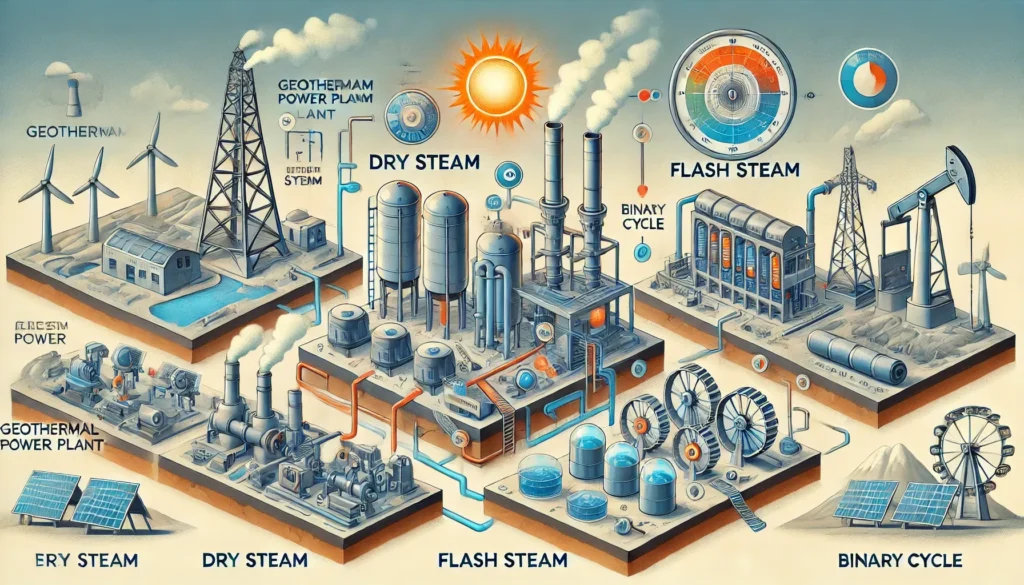
- Site Selection and Deep Well Drilling: Geological surveys and geothermal resource assessment identify suitable locations, such as the geothermal energy in Tuscany projects.
- Well Construction and Infrastructure Setup: Wells are drilled to access underground thermal resources, supported by geothermal plant infrastructure.
- Heat Extraction and Conversion: Heat is extracted and converted into mechanical energy to spin turbines.
- Power Generation: Turbines drive generators, producing electricity for distribution.
- Cooling and Recycling: Used fluids are cooled and re-injected into the Earth to sustain the resource.
Advantages of Geothermal Power Plants
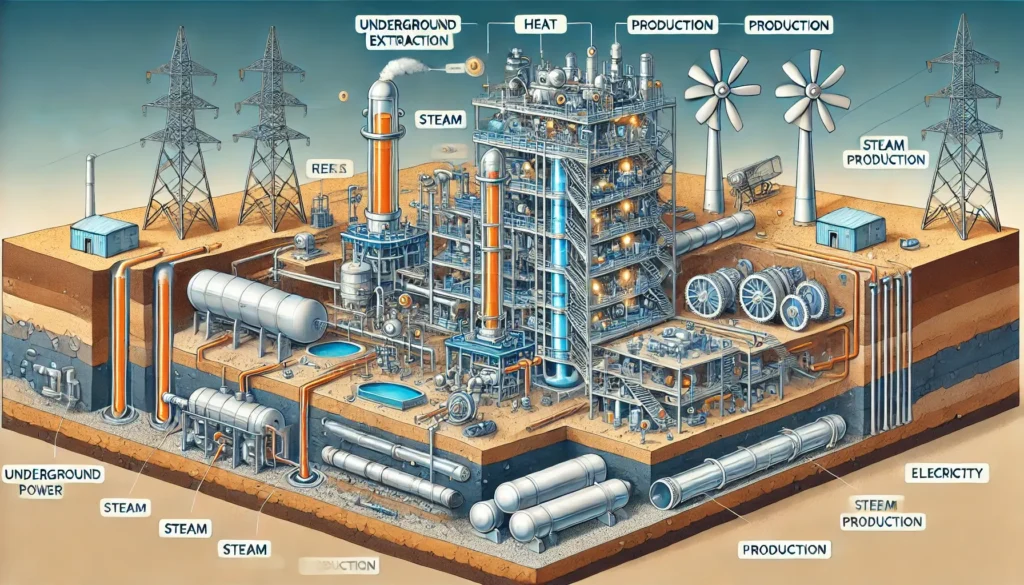
1. Renewable and Sustainable Energy
Geothermal energy production is a sustainable electricity generation method, relying on Earth’s inexhaustible heat supply.
2. Environmentally Friendly
With low environmental impact energy, geothermal plants emit minimal greenhouse gases compared to fossil fuels.
3. Reliable and Continuous Supply
Unlike solar or wind energy, geothermal baseload power offers a continuous power supply unaffected by weather conditions.
4. High Efficiency
Modern technologies ensure geothermal plant efficiency, maximizing energy output from available heat sources.
Challenges and Limitations
Despite their benefits, geothermal power plants face several challenges:
- Location Dependency: Suitable sites are limited to areas with high geothermal activity.
- High Initial Costs: Deep well drilling and infrastructure setup require significant investment.
- Environmental Concerns: Potential risks include induced seismicity and groundwater contamination.
- Geothermal Energy Limitations: Scaling these plants for widespread use is challenging.
Innovations and Future Prospects
1. Enhanced Geothermal Systems (EGS)
Enhanced geothermal systems (EGS) use advanced drilling techniques to expand geothermal reservoirs, increasing efficiency and accessibility.
2. Global Expansion
Countries like the United States and Italy are leading geothermal development, showcasing the potential for growth.
3. Research and Technology Advances
Ongoing geothermal energy research and geothermal energy technology development are improving efficiency and addressing challenges.
4. Policy Support and Investment
Government-backed geothermal energy policy initiatives are promoting adoption and funding research into geothermal energy future prospects.
Applications of Geothermal Energy
| Sector | Application | Key Benefits |
|---|---|---|
| Electricity | Generating power through geothermal power plants | Renewable, low environmental impact |
| Residential | Heating and cooling via geothermal heat pumps | Energy savings, reduced fossil fuel use |
| Agriculture | Heating greenhouses and drying crops | Low cost, year-round productivity |
| Industrial | Providing heat for industrial processes | Reliable and sustainable energy |
| Spa & Wellness | Utilizing geothermal hot springs for health centers | Natural therapy and relaxation benefits |
Why Geothermal Energy Matters
Geothermal power plants provide a renewable, sustainable electricity generation option with a low environmental impact and high efficiency. While challenges like deep well drilling costs and site dependency persist, advancements such as enhanced geothermal systems (EGS) offer promising solutions. Countries like Italy and the United States lead efforts in this field, demonstrating the global potential of geothermal energy.
Investments in geothermal energy research, technology, and policy will further enhance adoption, ensuring a cleaner and greener energy future.
